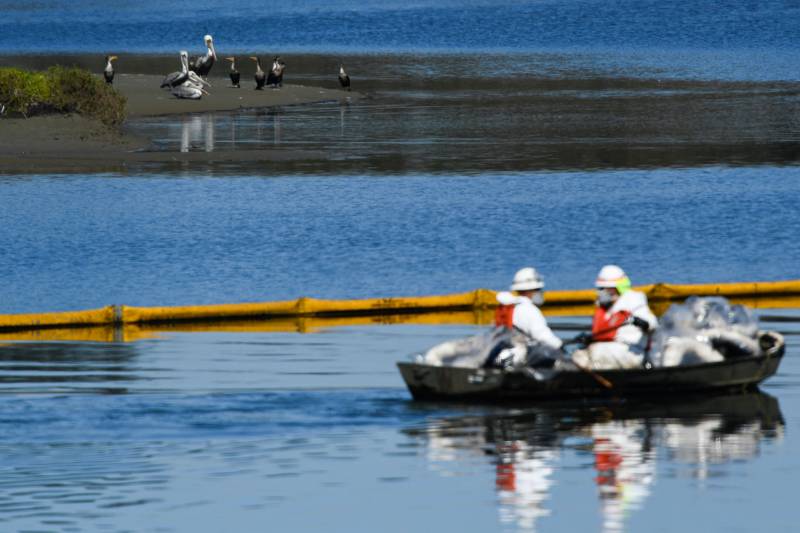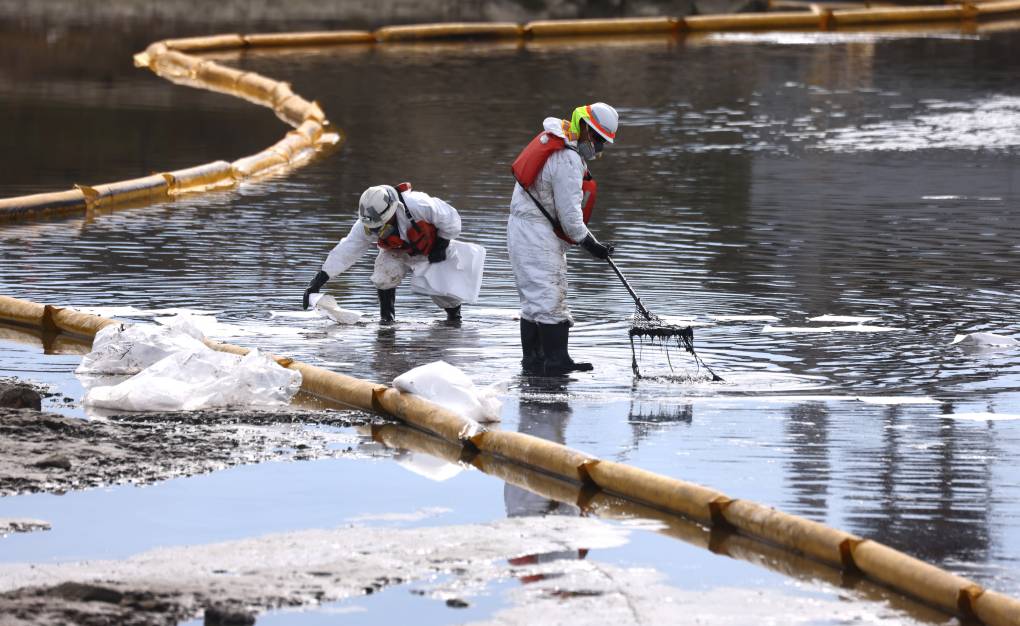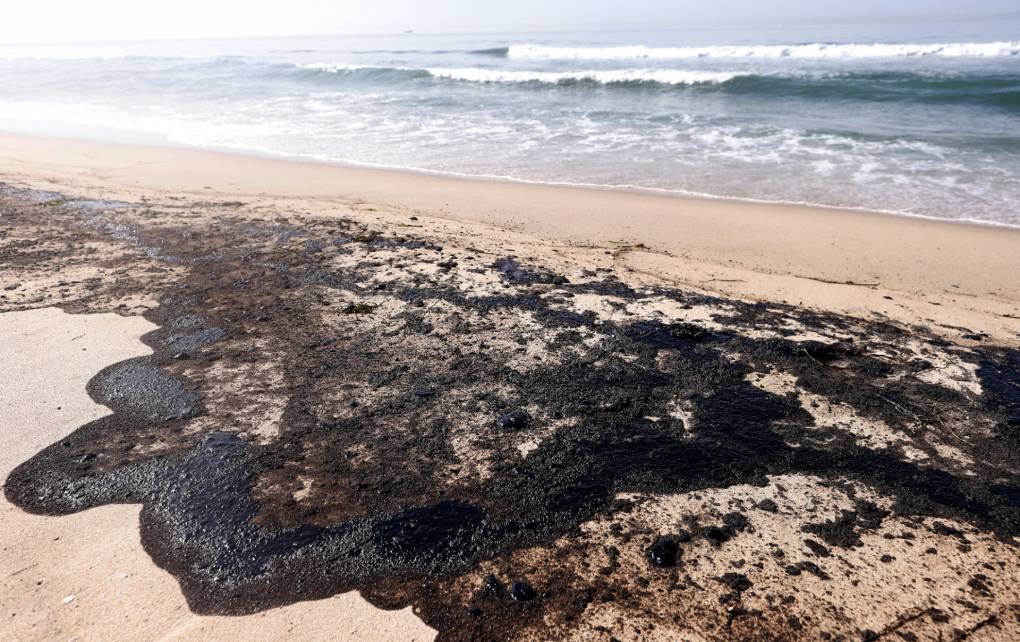The platform’s owner, Amplify Energy, also is involved. The city of Huntington Beach is participating, too, and state agencies such as the California Coastal Commission, the State Lands Commission and the State Parks Department, which has property in the path of the oil, are also monitoring the situation.
Who pays?
Once the investigation identifies a responsible party, state and federal officials will undertake a Natural Resource Damage Assessment, conducted through the fish and wildlife agency.
The complex and painstaking analysis quantifies death and injuries to wildlife — assigning a dollar value to a shore bird, for example — and estimates the cost of restoring the oiled landscape and waters.
Recent legislation has beefed up the state’s ability to penalize companies for oil spills: A 2020 law doubled the minimum and maximum fines for an array of oil spill violations and added a provision that a person who knowingly discharged or spilled oil into state waters, or failed to clean up the spill, could be fined up to $1,000 per gallon in spills of more than 1,000 gallons.
Another law, from 2018, required the state to consult with agencies such as the California Coastal Commission when evaluating damage to public resources such as beaches.
The Coastal Commission already has the authority to fine entities for activities that deny coastal access. A bill that would expand the commission’s ability to levy fines for environmental damage passed the legislature in September and is on the governor’s desk.
The state needs to send a message to companies that they will be required to pay to clean up after themselves, said state Sen. Ben Allen, a Democrat from Redondo Beach and the bill’s author. “The state bears so much of the damage and cost associated with these spills,” he said. “This will give the state the tool it needs to hold companies accountable.”
How expensive is it?
The price tag for environmental cleanup and fines can be high, although certainly affordable for mega companies.
After extensive litigation over the 1990 spill in Huntington Beach, several companies, including British Petroleum, Brandenburger Marine and tanker owner Attransco, paid about $27 million in cleanup costs and damages.
In 2019, a judge issued fines and penalties of $3.35 million against Plains All American Pipeline for the Refugio spill near Santa Barbara, far less than the $1 billion that prosecutors had sought. In addition, the company pegged its cleanup costs at $335 million.
On the other end of that spectrum is the 2010 Deepwater Horizon blowout, which killed 11 workers on a drilling rig that spewed 3 million barrels of crude oil across 40,000 square miles of the Gulf of Mexico.
British Petroleum finally paid $60 billion in criminal and civil penalties, environmental damages and cleanup costs. British Petroleum also was fined for violating the Migratory Bird Treaty Act and the federal Clean Water Act.
What has the state done to avoid and prepare for oil spills?
The 1990 oil spill off Huntington Beach led to the passage of the Lempert-Keene-Seastrand Oil Spill Prevention and Response Act, which established the state Oil Spill Prevention and Response agency under the Department of Fish and Wildlife.
Three years later, the oil spill agency created the state’s first comprehensive plan to respond to oil spills, and established a government-wide network of some 22 agencies that share information and responsibility responding to spills.
The Legislature provided money for a $50 million trust fund, whose interest payments support the Oiled Wildlife Care Network. The agency also supports wildlife care centers and rescue centers. The first one opened in 1997 at Humboldt State University in Arcata. There are now 12 such centers around the state.
How does this compare to other spills in California?
The largest oil spill in California history was a catalyst for the launch of the American environmental movement and the establishment of the federal Environmental Protection Agency.
The 1969 blowout at a Union Oil drilling platform 6 miles off the coast of Santa Barbara spilled 4.2 millions of crude into the water and onto nearby beaches before it was brought under control 11 days later.
Two years later, after the Santa Barbara incident, two oil tankers collided in the mouth of San Francisco Bay, releasing 840,000 gallons of oil into the water. Tides and winds carried the spill north and south along a coastline that served as a critical wintering habitat for aquatic birds. A 1972 report by Western Field Ornithologists estimated 20,000 birds died as a result of exposure to the oil.
In the 1990 Huntington Beach spill, shoreline from Seal Beach south to Newport Beach was coated with oil from the 400,000 gallon spill from the American Trader.
In 2007, the Hong Kong-owned oil tanker Cosco Busan sideswiped a supporting pier of the Bay Bridge in heavy fog. The resulting 100-foot gash released 53,000 gallons of oil into San Francisco Bay, killing an estimated 6,800 birds.
The Refugio State Beach spill, which occurred 24 miles west of Santa Barbara in 2015, was distinctive in that the pipeline rupture occurred onshore, about a mile inland from the beach. The spill sent an estimated 120,000 gallons into a culvert that drained into the Pacific, damaging a rich marine ecosystem of kelp forests.
In an earnings report later that year, Plains All American Pipeline, the Houston-based owner of the pipeline, estimated 142,800 gallons had leaked from the 29-year-old pipe. Emergency response and cleanup costs were estimated at $257 million.


